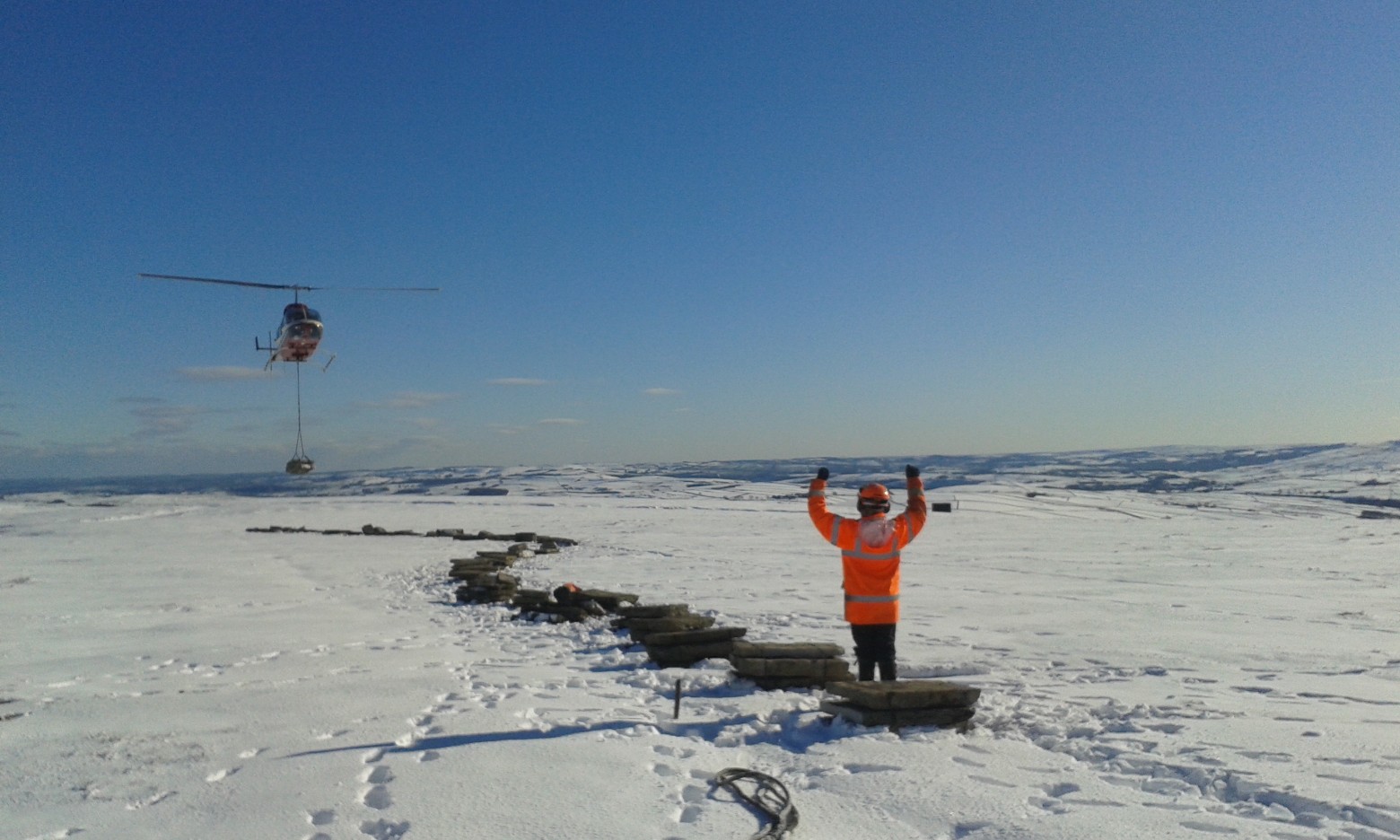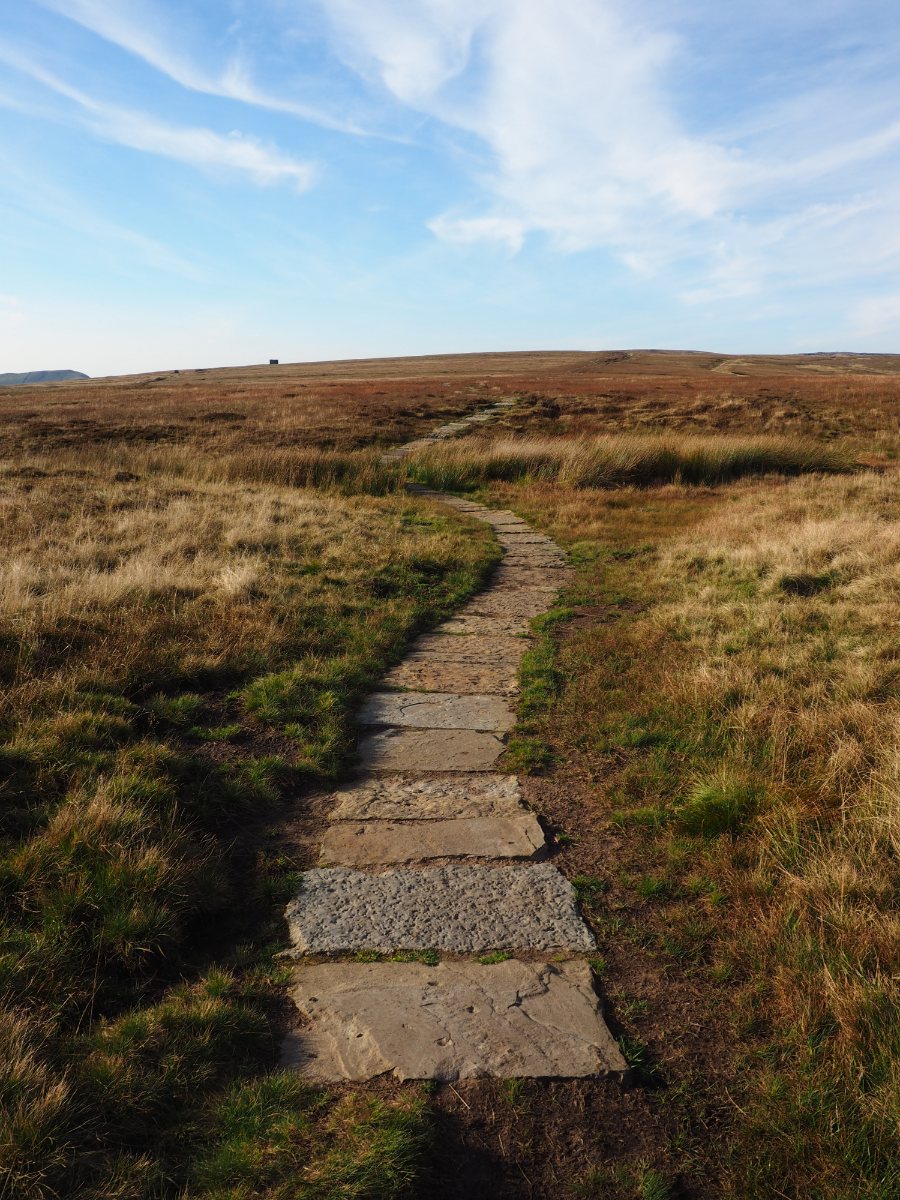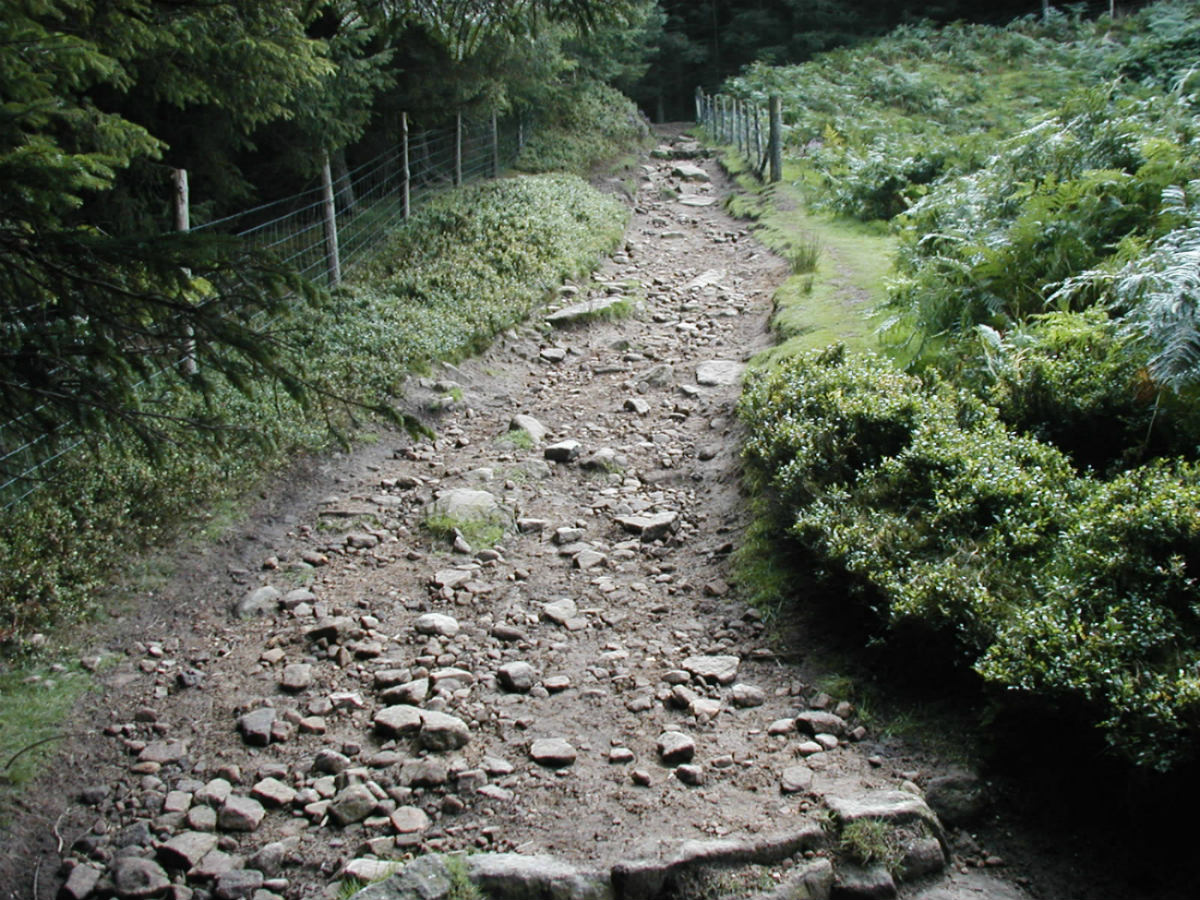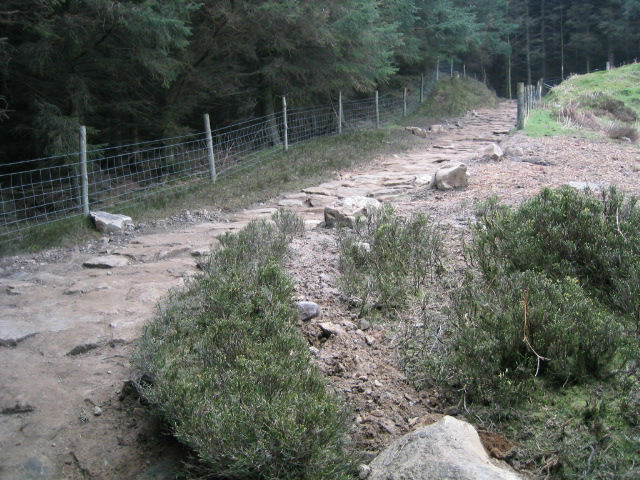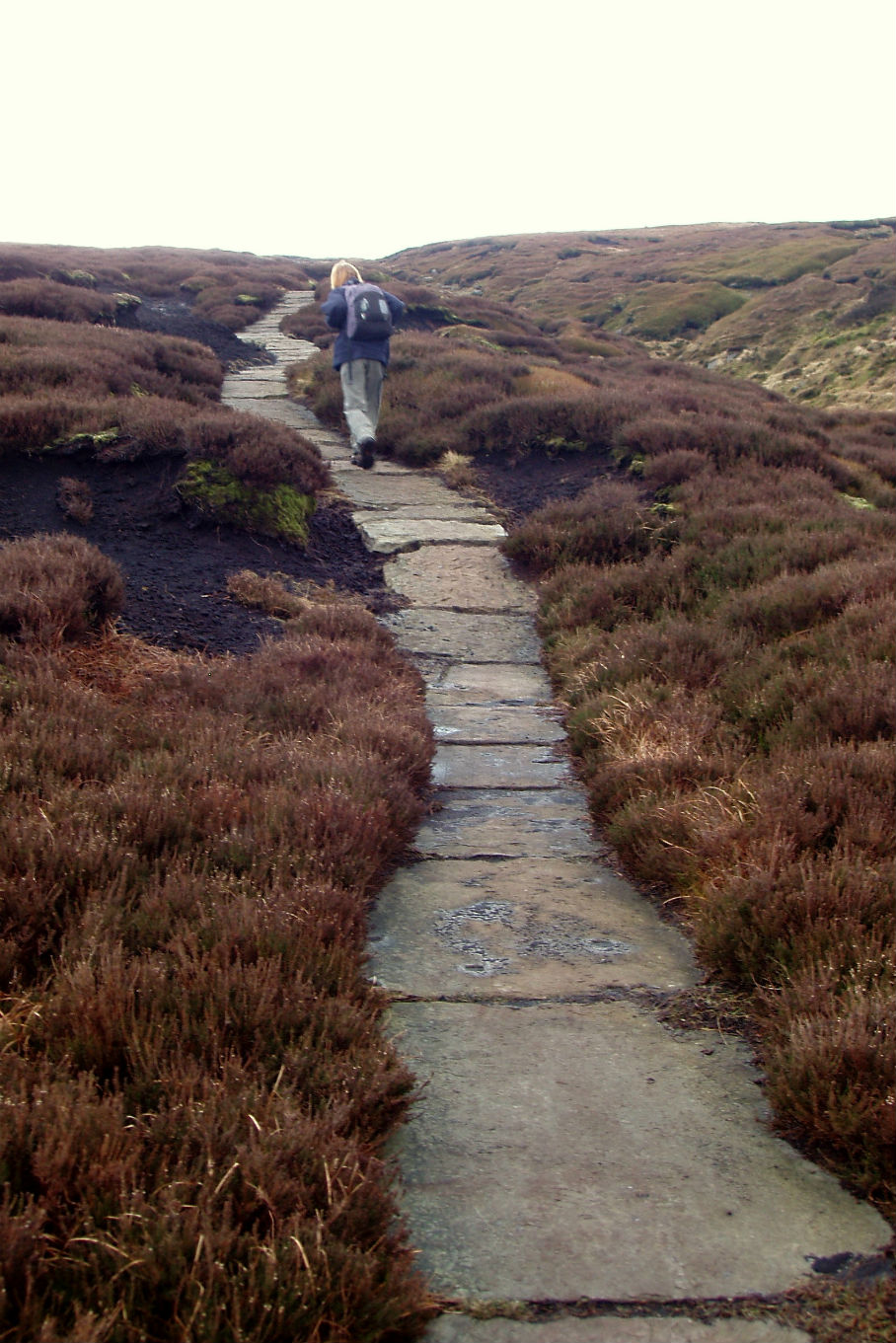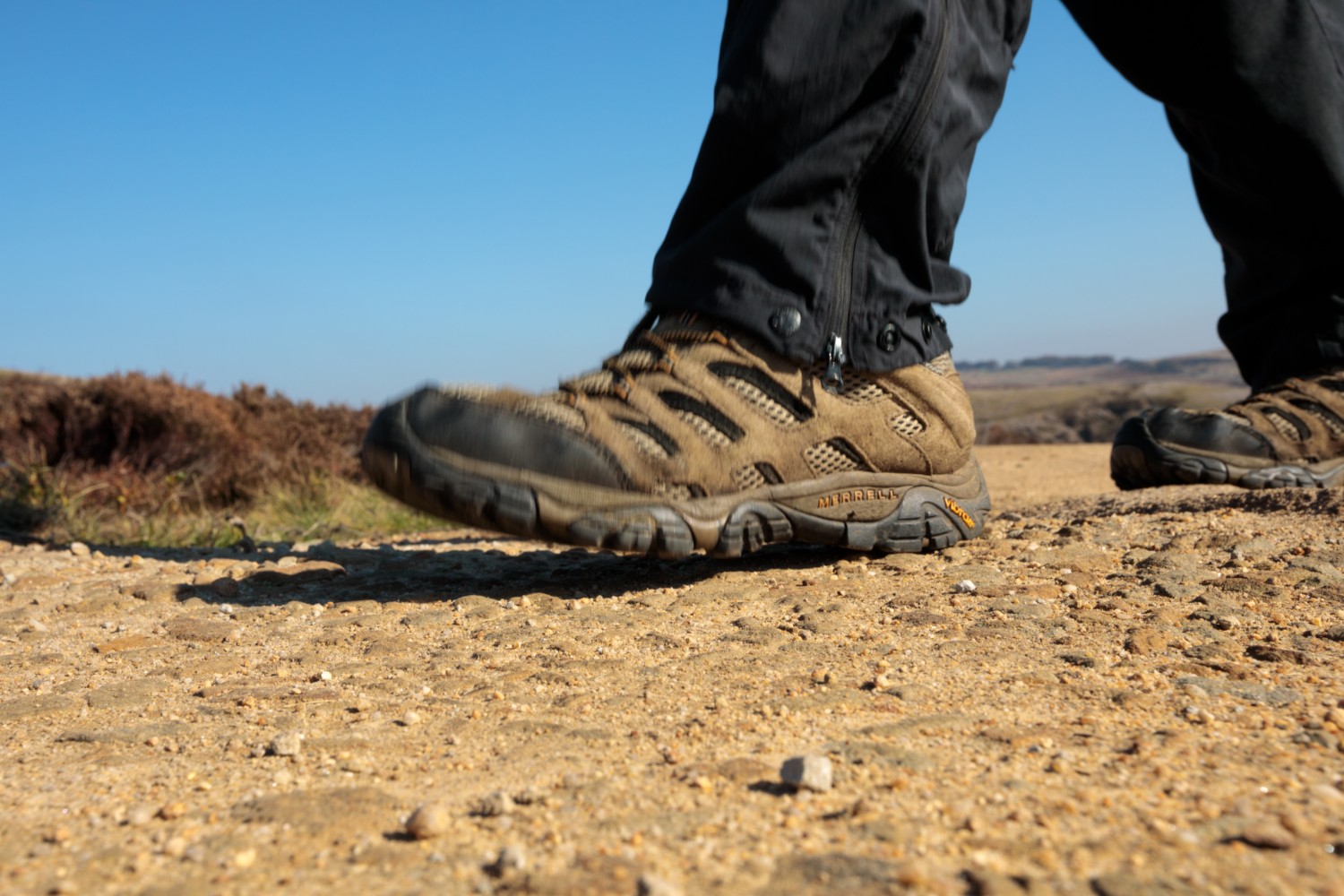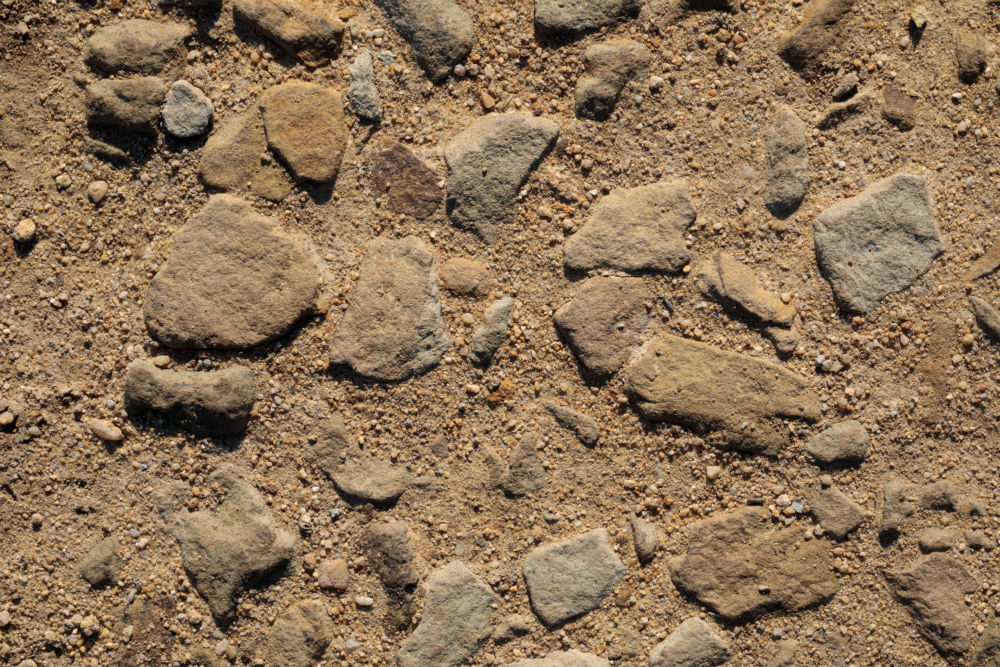
Footpaths and bridleways
“With every one of the 6 million visitors to the Peak District moors each year a small piece is removed on their soles”
Why are paths important?
Over the decades the loss of peat has created scars in the landscape along popular paths and the situation has been made worse by the action of water washing away the loosened soil. But less obvious is the effect to wildlife. As walkers skirt around the edges of eroded and boggy areas, paths widen, plants become trampled and the birds that nest on the ground, often close to paths, are disturbed. Birds frightened from their nest leave eggs or young vulnerable to prey, the cold and even the risk of trampling.
It is therefore essential that appropriate remedial work is carried out. Read on for technical drawings and case studies of the techniques employed by the Moors for the Future Partnership to restore our moorland paths.
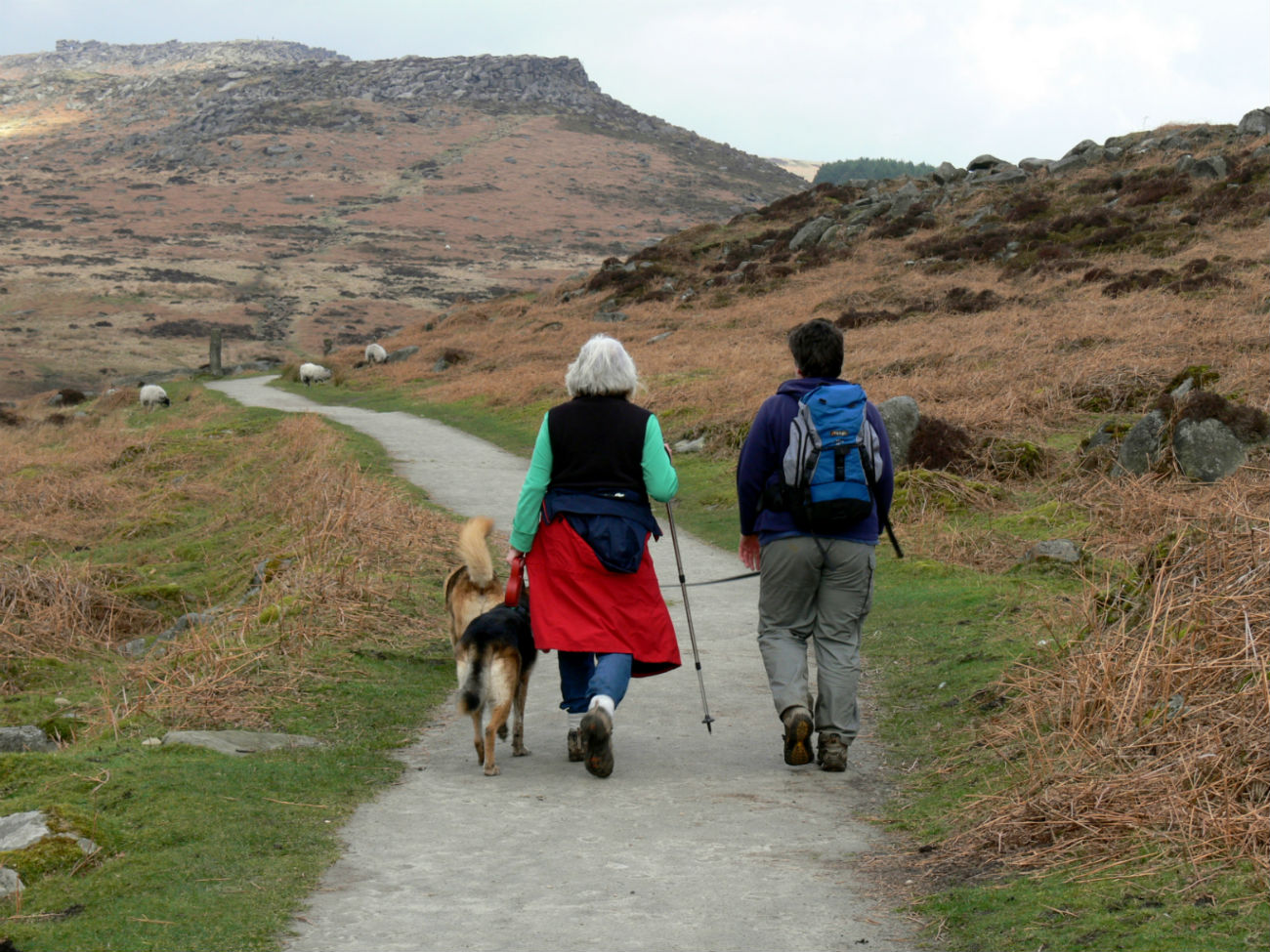
Aggregate path
The use of aggregate is confined to paths that are less than 1:10 gradient (i.e. for every 10 metres length of footpath, the vertical rise is no greater than 1 metre). Therefore aggregate has been used to good effect on all of the 6 easy access paths we have been responsible for upgrading since 2003.
Find out more about aggregate paths by reading our case study in the Burbage Valley click here
To see a diagram of how aggregate paths on geotextile are made click here
Too see a diagram of how aggregate paths are created click here
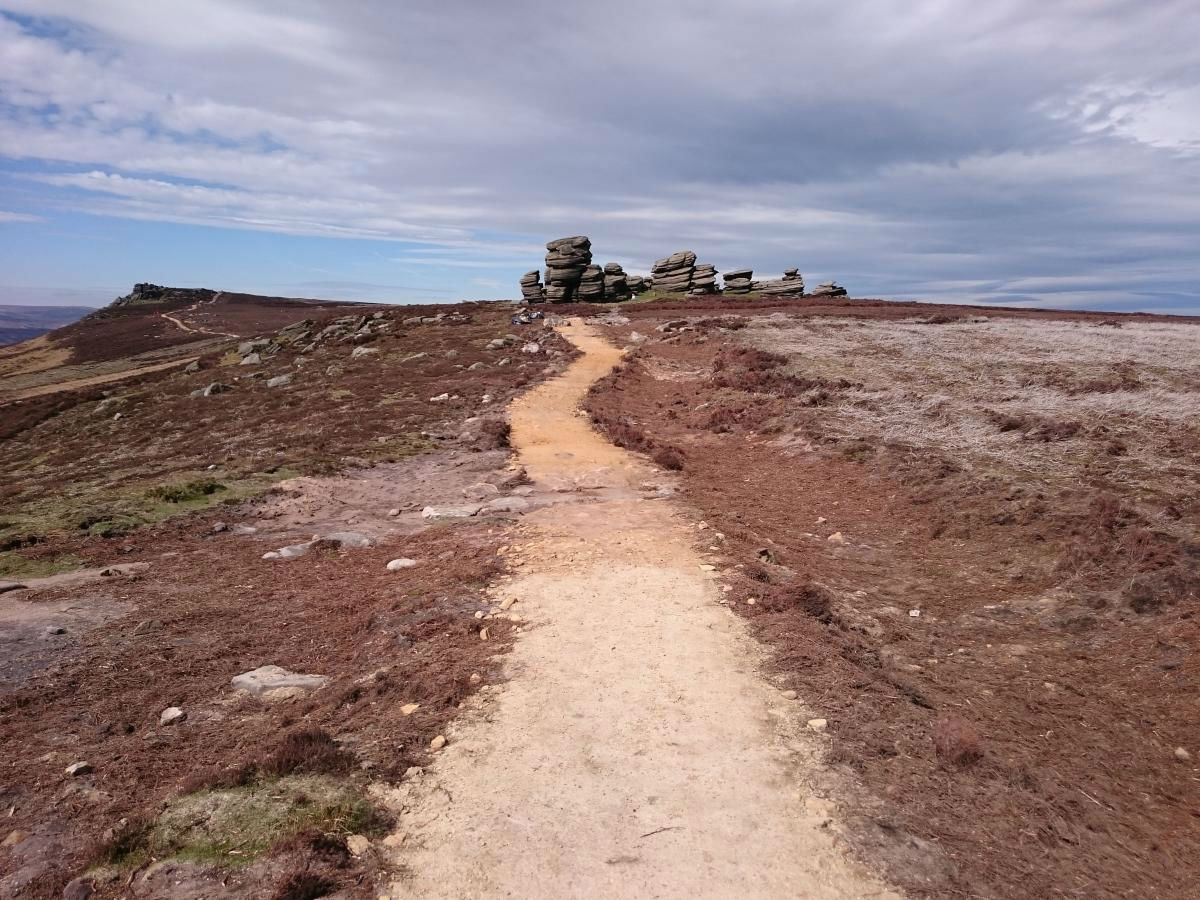
Substrate reversal
This technique literally involves turning the path upside down using a large excavator. A ditch is dug and the spoil removed is used to create the new surface of the path. This technique is relatively cheap, working out at about £15-20/m2.
The image shows works undertaken at Whinstone Lee Tor. Find out more here
To see a detailed diagram of how we undertake substrate reversal click here
Laying flagstones
It seems fitting that the stone slabs used to form the floors of the large mills in the surrounding cities are returned to their original environment. These stone flags are airlifted onto site and literally ‘float’ over peaty or boggy ground.
This is probably the best technique for putting a path across deep peat, although it is quite expensive. This technique costs in the region of £50-80/m per linear metre (approx 700mm wide), mainly depending on the cost of getting materials to site.
The photos to the right show images of Brown Knoll throughout works to lay a flagstone path.
For a diagram of how flagstone paths are laid click here
Click here for a diagram explaining stone flagged and pitched paths click here
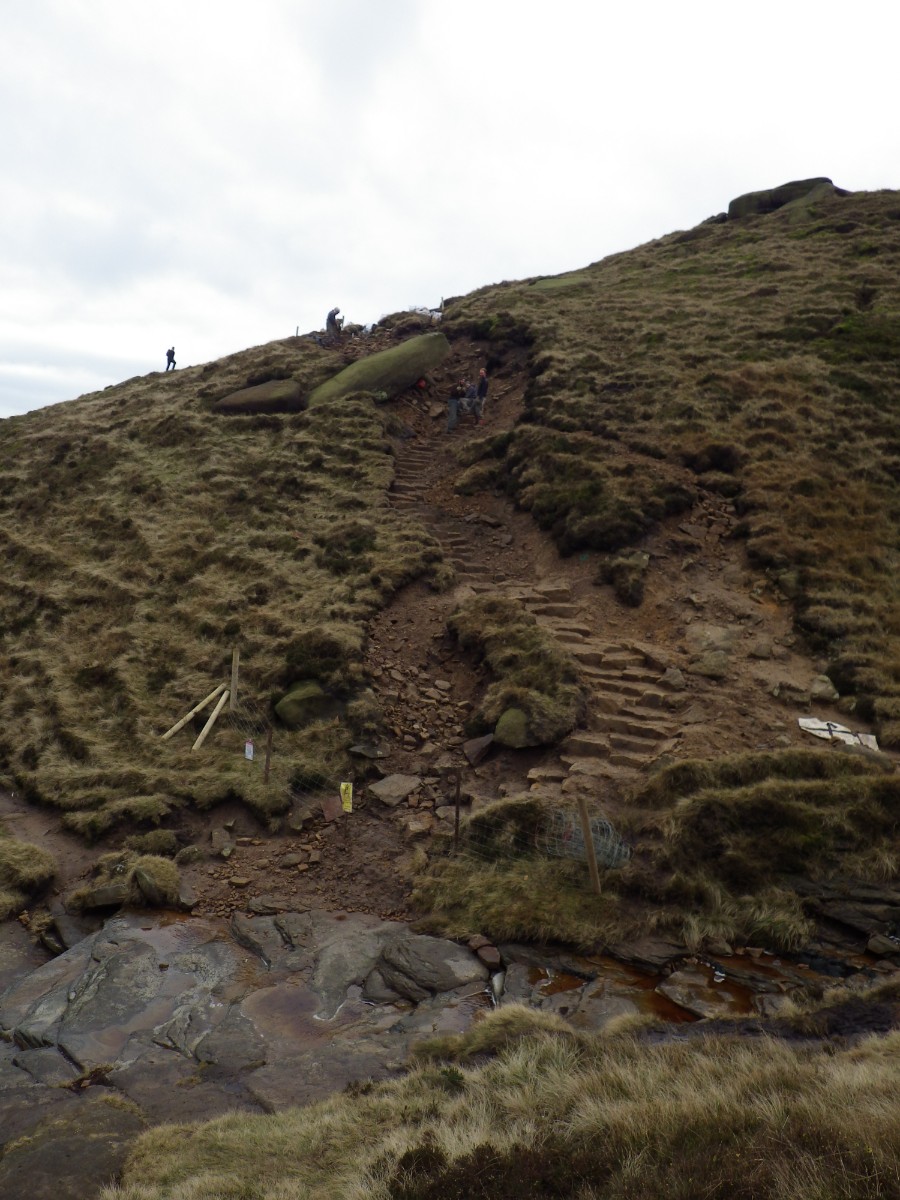
Stone pitching
This technique involves interlocking large stones, with their flattest side up to create small irregular steps that blend into the landscape. Due to its cost (approximately £100 per metre), this approach is only employed where the gradient is too steep for the other methods (i.e. those above 1:4 (25%)).
The image to the left shows footpath works at Crowden.
Click here to see a detailed diagram of how stone pitching is created.
Bridleways
The construction of Bridleways requires a slightly different approach with consideration of the needs of a horse and rider being taken into account. Paths need to be wider and less steep and steps should be reduced or avoided if possible. However, ramps should still be stepped in order to reduce the danger from slipping when icy. All of the techniques can be used, although flag paths should be used with caution.
The main users of upland bridleways will be mountain bike riders, legally they can use any bridleway, however bridleways have to be constructed so that they are suitable for use by horses rather than mountain bikes.
Bridleways will be more expensive to install than footpaths for the various techniques. The images to the right shows bridleway works at Cut Gate.
For a technical drawing of a flagstone bridleway, click here
For a diagram of pitching for a bridleway click here
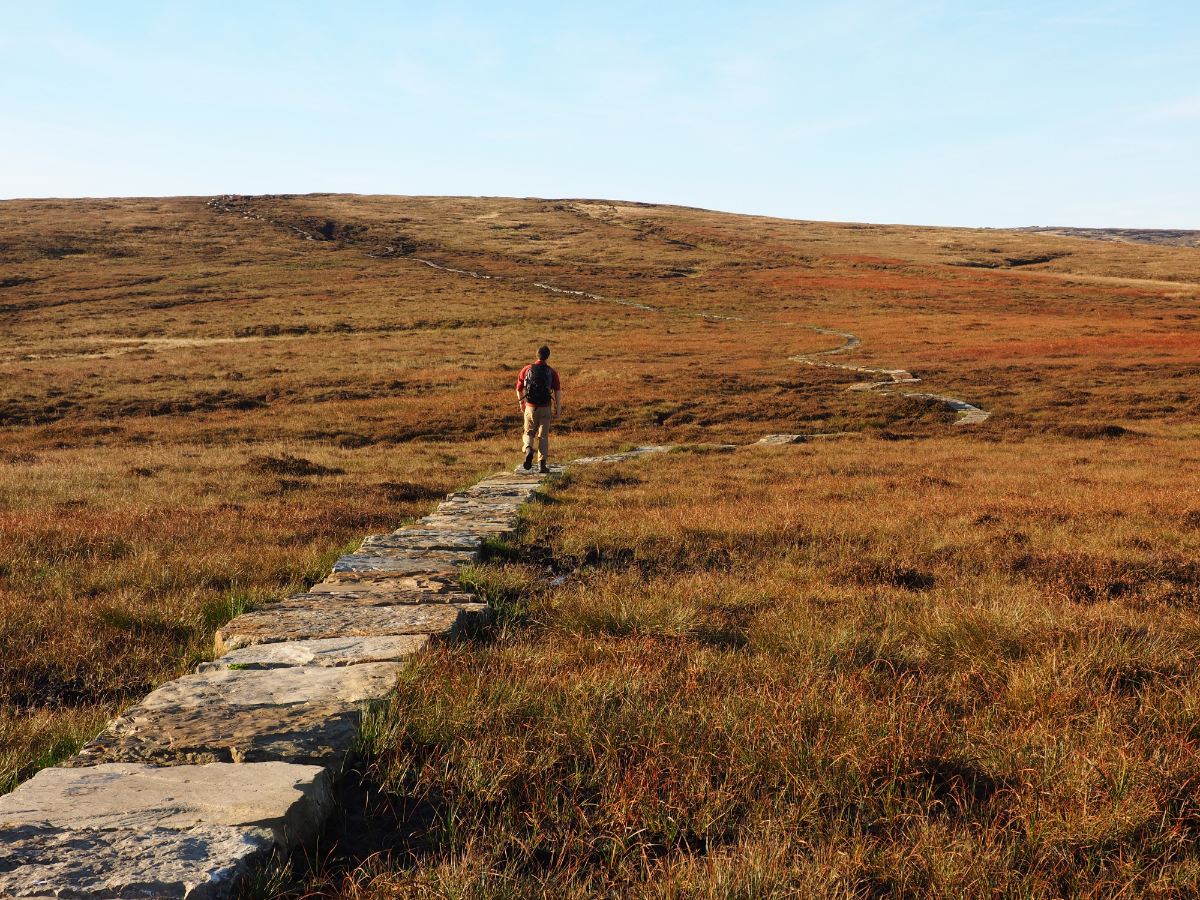
Landscaping
Once the path has been tackled, all that’s left is to tidy it up with a bit of housekeeping and make it blend into its surroundings. This involves landscaping, revegetating and stabilising the areas adjacent to the path.
Click here for a diagram of landscaping eroded path sides
Click here for a diagram of landscaping gullies on steep slopes
Click here for a diagram of using channelling or path blocking mounds
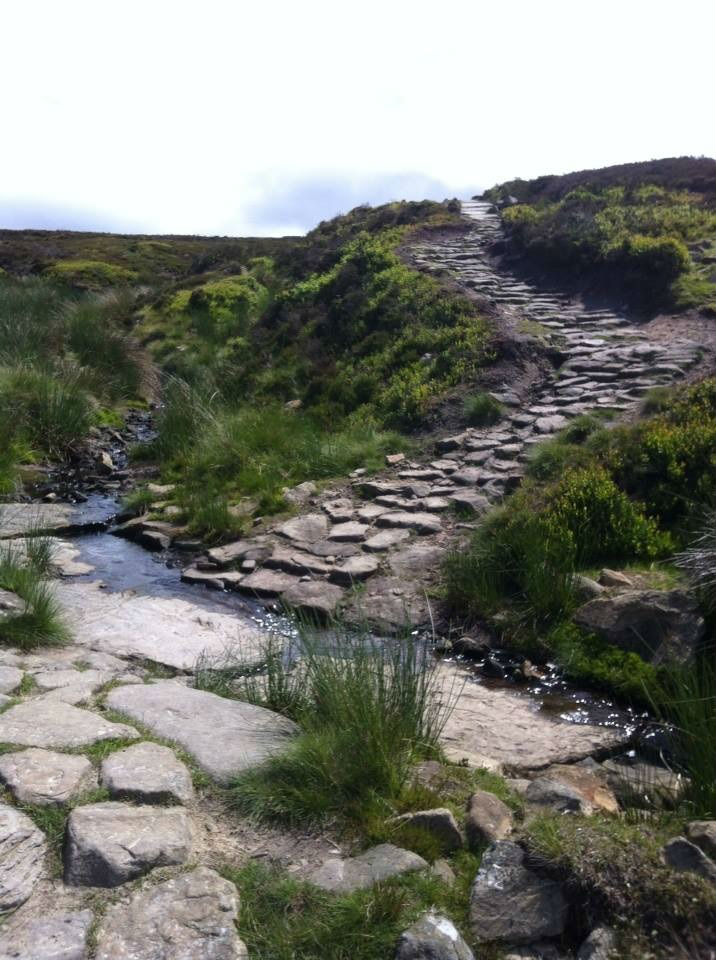
Drainage
Addressing the hydrological issues relating to the site is vital in ensuring maintenance is kept to a minimum. Each link below opens a Moors for the Future technical drawing.
